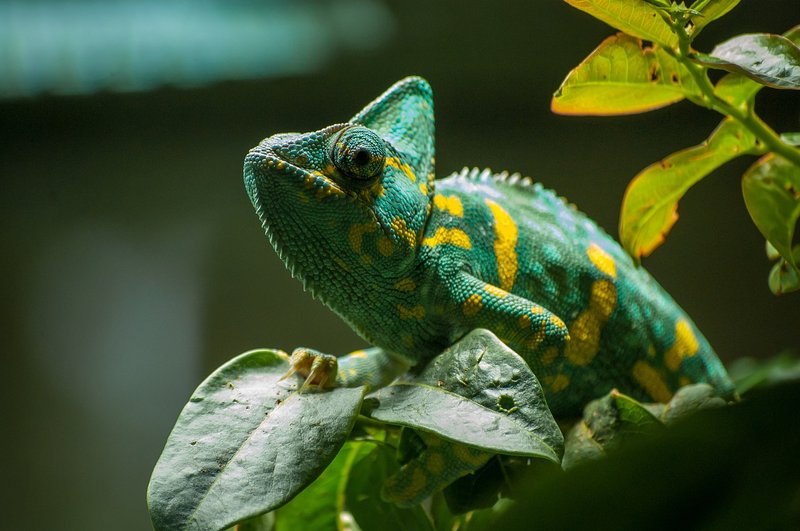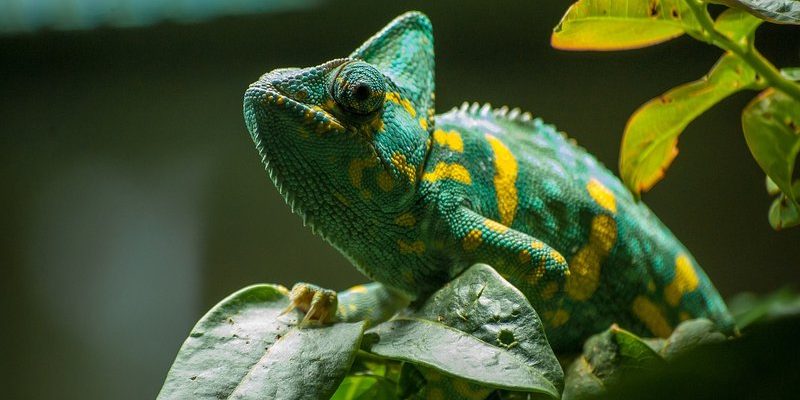
Let’s dive into some common health issues you might face with veiled chameleons. Knowing what to look for can make all the difference if you want to ensure your scaly friend stays healthy and happy.
Respiratory Issues
Respiratory problems are one of the most common health issues faced by veiled chameleons. These guys have sensitive lungs, and if their environment isn’t just right, they can run into trouble. Factors like high humidity, poor ventilation, or even temperature fluctuations can lead to respiratory infections.
You might notice signs like a *gurgling sound*, wheezing, or excessive mucus around the nostrils. If your chameleon is closing its eyes or staying in one spot for too long, that could be a red flag. If you catch these symptoms early, a vet visit can usually sort things out. Make sure to provide a well-ventilated space and keep an eye on humidity levels, ideally around 30-50%.
Here are some *preventative measures* to consider:
- Maintain proper enclosure temperature and humidity.
- Ensure good airflow in the enclosure.
- Avoid drafty areas.
Metabolic Bone Disease (MBD)
Metabolic Bone Disease, or MBD, is a real villain when it comes to the health of your veiled chameleon. This issue arises from a lack of calcium and vitamin D3, which are crucial for strong bones. Think of it like not getting enough calcium; it can lead to weak bones and deformities.
Signs of MBD include a *bent or crooked posture*, swelling in the legs, or even difficulty climbing. If you suspect MBD, a vet can guide you on supplements and adjustments to your chameleon’s diet. To prevent this, ensure they receive a balanced diet with plenty of calcium-rich foods. Dusting crickets and other insects with calcium powder can make a big difference.
To help prevent MBD, keep these tips in mind:
- Provide a variety of insects and greens.
- Use UVB lighting to help with vitamin D3 absorption.
- Regularly dust food with calcium and multivitamins.
Dehydration
Dehydration can sneak up on your veiled chameleon without you even realizing it. Unlike cats or dogs, chameleons don’t drink water from bowls; they prefer to sip from droplets on leaves. If they’re not getting enough moisture, they can quickly become dehydrated.
One major sign to watch for is *wrinkled skin*. If their skin looks saggy or loses its elasticity, that’s a key sign you should check. Another indicator is a sunken area near the eyes. A simple solution? Mist their enclosure regularly or set up a drip system for them to drink from.
Here’s how you can help ensure your chameleon stays hydrated:
- Regularly mist the enclosure with water.
- Provide a water source like a dripper or small bowl (though not all will use it).
- Monitor their eating habits—sometimes, they won’t eat if they’re dehydrated.
Parasites
Parasites can be a sneaky problem for veiled chameleons and can be particularly tricky to manage. They can come from contaminated insects or unclean habitats. Signs can include *weight loss*, lethargy, or abnormal feces. Just like how we might feel sluggish when fighting off a cold, your chameleon can exhibit similar symptoms.
If you suspect your pet has parasites, it’s important to consult a vet promptly. They can perform tests and offer treatments. Keeping an eye on the cleanliness of their habitat, and making sure you’re feeding them well-sourced insects can help reduce the risk of parasites.
Here are some steps to keep parasites at bay:
- Regularly clean and sanitize the enclosure.
- Source your feeder insects from reputable suppliers.
- Monitor their health regularly for any changes in behavior or appearance.
Eye Problems
Eye issues can be a common health problem for veiled chameleons, often caused by improper lighting or substrate. Your chameleon might develop *swelling*, *discharge*, or even closed eyes if there’s an issue. In some cases, the improper UVB lighting can lead to eyesight problems that could affect their overall health.
Regularly checking their habitat for proper lighting and making sure they have plenty of places to hide can help protect their eyes. If you notice any persistent symptoms, it’s a good idea to see a vet.
To help prevent eye problems, consider these tips:
- Use high-quality UVB lights that cover their enclosure.
- Ensure there are no sharp objects or overly dusty substrates in their habitat.
- Provide plenty of hiding spots to reduce stress.
Keeping a veiled chameleon healthy is definitely a commitment, but knowing what to look out for can make things a lot easier. From respiratory issues to eye problems, being proactive in their care can prevent many common health problems. Just think of your chameleon as a tiny, colorful creature that relies on you for everything—if you take care of their environment, diet, and health, they’ll thrive and bring joy to your life.
So, whether you’re misting their enclosure or checking the temperature, remember that each small step can lead to a healthier, happier chameleon. There’s a lot to learn, and by staying on top of their needs, you can help your little buddy live a long and vibrant life.

